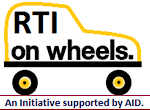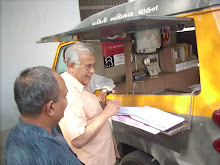Live Law: New Delhi: Saturday, July 07, 2018.
Transparency
activists have always applauded and given credit to the Supreme Court of India
for its outstanding role in recognising the fact that the Right to Information
to government information is a fundamental right of its citizens under Article
19 (1)(a) of the Constitution of India.
The first
landmark pronouncement in this respect was made by Justice Mathew in State of
Uttar Pradesh v. Raj Narain (1975) 4 SCC 428 wherein he stated, “In a
government of responsibility like ours, where all the agents of the public must
be responsible for their conduct, there can be but few secrets. The people of
this country have a right to know every public act, everything that is done in
a public way by their public functionaries. They are entitled to know the
particulars of every public transaction in all its bearing. Their right to
know, which is derived from the concept of freedom of speech, though not
absolute, is a factor which should make one wary when secrecy is claimed for
transactions which can, at any rate, have no repercussion on public security”.
Effectively,
the apex court signalled that the only bar on information should be one which
would impact public security. Repeated pronouncements were made in SP Gupta,
Rajagopal, ADR, Dinesh Trivedi and other landmark cases reiterating the
ideology and principle, recognising the right to information as a fundamental
right flowing from Article 19(1)(a) of the Constitution of India. The Right to
Information Act, 2005 hereinafter referred to as “RTI Act” has codified this
right and also listed certain areas for which the information may be denied;
and these exempted areas were on the same lines as that spelled out in Article 19(2) of the Constitution of India.
Article 19 of the Constitution states:
Article 19:
Protection of certain rights regarding freedom of speech, etc (1) All citizens
shall have the right-
(a) to freedom
of speech and expression;
(b) to
assemble peaceably and without arms;
(c) to form
associations or unions, co-operative societies;
(d) to move
freely throughout the territory of India;
(e) to reside
and settle in any part of the territory of India; 12 [and];
(f)[omitted]
(g) to
practise any profession, or to carry on any occupation, trade or business.
(2) Nothing
in subclause (a) of clause (1) shall affect the operation of any existing law,
or prevent the State from making any law, in so far as such law imposes
reasonable restrictions on the exercise of the right conferred by the said
sub-clause in the interests of the sovereignty and integrity of India, the
security of the State, friendly relations with foreign States, public order,
decency or morality or in relation to contempt of court, defamation or
incitement to an offence.
The
Parliament of India recognized and codified this fundamental right of citizens
in the year 2005 in which it clearly laid out that there would be 10 exemptions
instead of one as pronounced by Justice Mathew in Raj Narain case stated
hereinabove. Justice Ravindra Bhat of Delhi High Court, impressively, captured
the spirit of the RTI Act in his judgment in the Bhagat Singh v. CIC WP (c) No.
3114/2007 on 3 December 2007, when he stated:
“13. Access
to information, under Section 3 of the Act, is the rule and exemptions under
Section 8, the exception. Section 8 being a restriction on this fundamental
right, must, therefore, be strictly construed. It should not be interpreted in manner
as to shadow the very right itself. Under Section 8, exemption from releasing
information is granted if it would impede the process of investigation or the
prosecution of the offenders. It is apparent that the mere existence of an investigation
process cannot be a ground for refusal of the information; the authority
withholding information must show satisfactory reasons as to why the release of
such information would hamper the investigation process. Such reasons should be
germane, and
the opinion of the process being hampered should be reasonable and based on
some material. Sans this consideration, Section 8(1)(h) and other such
provisions would become the haven for dodging demands for information.
A
rights-based enactment is akin to a welfare measure, like the Act, should
receive a liberal interpretation. The contextual background and history of the
Act is such that the exemptions, outlined in Section 8, relieving the
authorities from the obligation to provide information, constitute restrictions
on the exercise of the rights provided by it. Therefore, such exemption
provisions have to be construed in their terms; there is some authority
supporting this view (See Nathi Devi v. Radha Devi Gupta 2005 (2) SCC 201; B.
R. Kapoor v. State of Tamil Nadu 2001 (7) SCC 231 and V. Tulasamma v. Sesha
Reddy 1977 (3) SCC 99). Adopting a different approach would result in narrowing
the rights and approving a judicially mandated class of restriction on the
rights under the Act, which is unwarranted.”
The RTI Act
categorically states that the only reason for denial of information are given
in sections 8 and 9 which are given at the end of this paper.
Citizens have
had great hope that the judiciary would be the sentinel in defending this
fundamental right and would help to hold the government authorities to the
strictest test, which would help to empower individual citizens to hold their governments
accountable and reduce arbitrariness and corruption which is omnipresent in the
Indian social atmosphere.
RTI has
spread very well and empowered citizens, thereby, deepening roots of Indian
democracy. Individual citizens have become the vigilance monitors of government
and public servants by bringing greater transparency and accountability. They
have uncovered many scams and exposed corruption. This is slowly moving the
nation from being an elective democracy to a meaningful participatory democracy
where active citizenship can be practised.
In this
backdrop, I am analysing the role played by the Supreme Court in this journey
of transparency after the advent of the RTI Act by analysing seven judgments on
the RTI Act by the Supreme Court.
Right to free
speech, publishing and information all arise from Article19(1)(a) of the
Constitution. The first two have been growing in a healthy manner. Right to
Information really became recognised across the nation only in 2005 and grew in
a very healthy manner for the first few years. I decided to look at the Supreme
Court judgments on RTI. I analysed 20 judgments and am presenting my analysis
of five of them.














































































